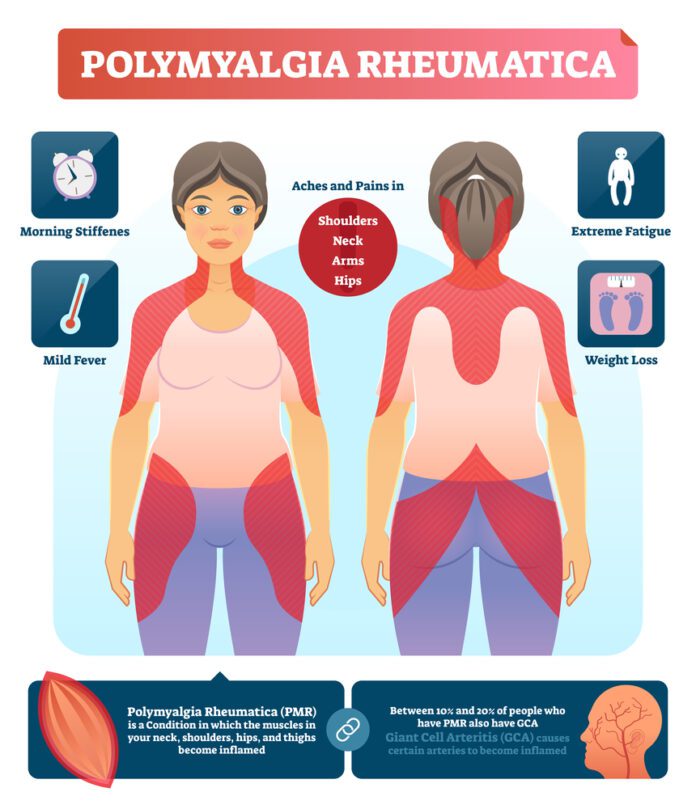Overview Of Polymyalgia Rheumatica
Polymyalgia Rheumatica (PMR) is an inflammatory disorder. It involves pain and stiffness in the shoulders and often the hips.
Commonly Associated With
PMR
Causes Of Polymyalgia Rheumatica
Polymyalgia Rheumatica most often occurs in people over 50 years old. The cause is unknown.
PMR may occur before or with giant cell arteritis (GCA; also called temporal arteritis). This is a condition in which blood vessels that supply blood to the head and eye become inflamed.
PMR can sometimes be hard to tell apart from rheumatoid arthritis (RA) in an older person. This occurs when tests for rheumatoid factor and anti-CCP antibody are negative.
Symptoms Of Polymyalgia Rheumatica
The most common symptom is pain and stiffness in both shoulders and the neck. The pain and stiffness are worse in the morning. This pain most often progresses to the hips.
Fatigue is also present. People with this condition find it increasingly hard to get out of bed and to move around.
Other symptoms include:
- Appetite loss, which leads to weight loss
- Depression
- Fever
Exams & Tests
Lab tests alone can’t diagnose PMR. Most people with this condition have high markers of inflammation, such as the sedimentation rate (ESR) and C-reactive protein.
Other test results for this condition include:
- Abnormal levels of proteins in the blood
- Abnormal level of white blood cells
- Anemia (low blood count)
- These tests may also be used to monitor your condition.
However, imaging tests such as x-rays of the shoulder or hips are not often helpful. These tests may reveal joint damage that is not related to recent symptoms. In difficult cases, an ultrasound or MRI of the shoulder may be done. These imaging tests often show bursitis or low levels of joint inflammation.
Treatment Of Polymyalgia Rheumatica
Without treatment, PMR does not get better. However, low doses of corticosteroids (such as prednisone, 10 to 20 mg per day) can ease symptoms, often within a day or two.
The dose should then be slowly reduced to a very low level.
Treatment needs to continue for 1 to 2 years. In some people, even longer treatment with low doses of prednisone is needed.
Corticosteroids can cause many side effects such as weight gain, development of diabetes or osteoporosis. You need to be watched closely if you are taking these medicines. If you are at risk for osteoporosis, your health care provider may recommend you take medicines to prevent this condition.



